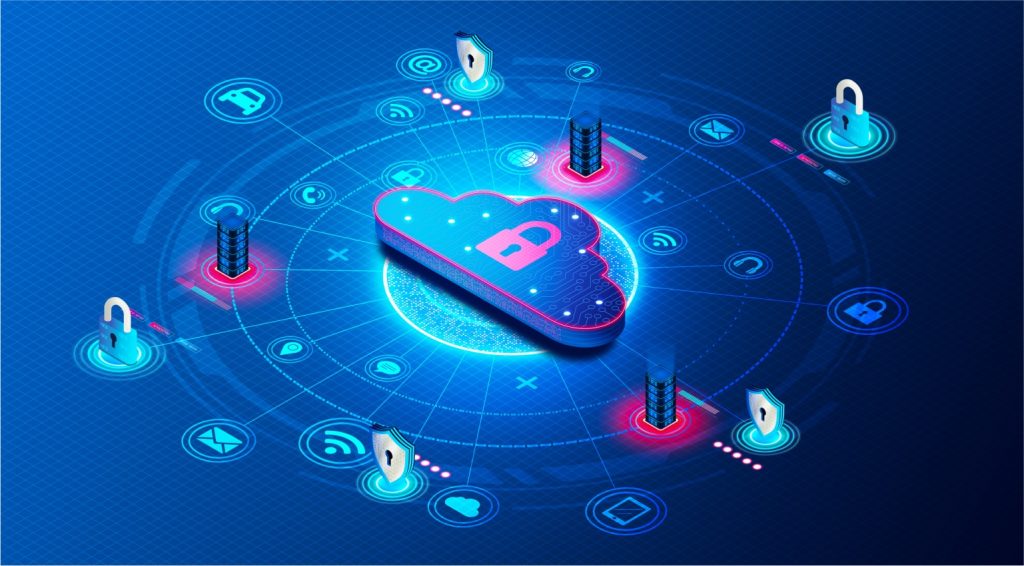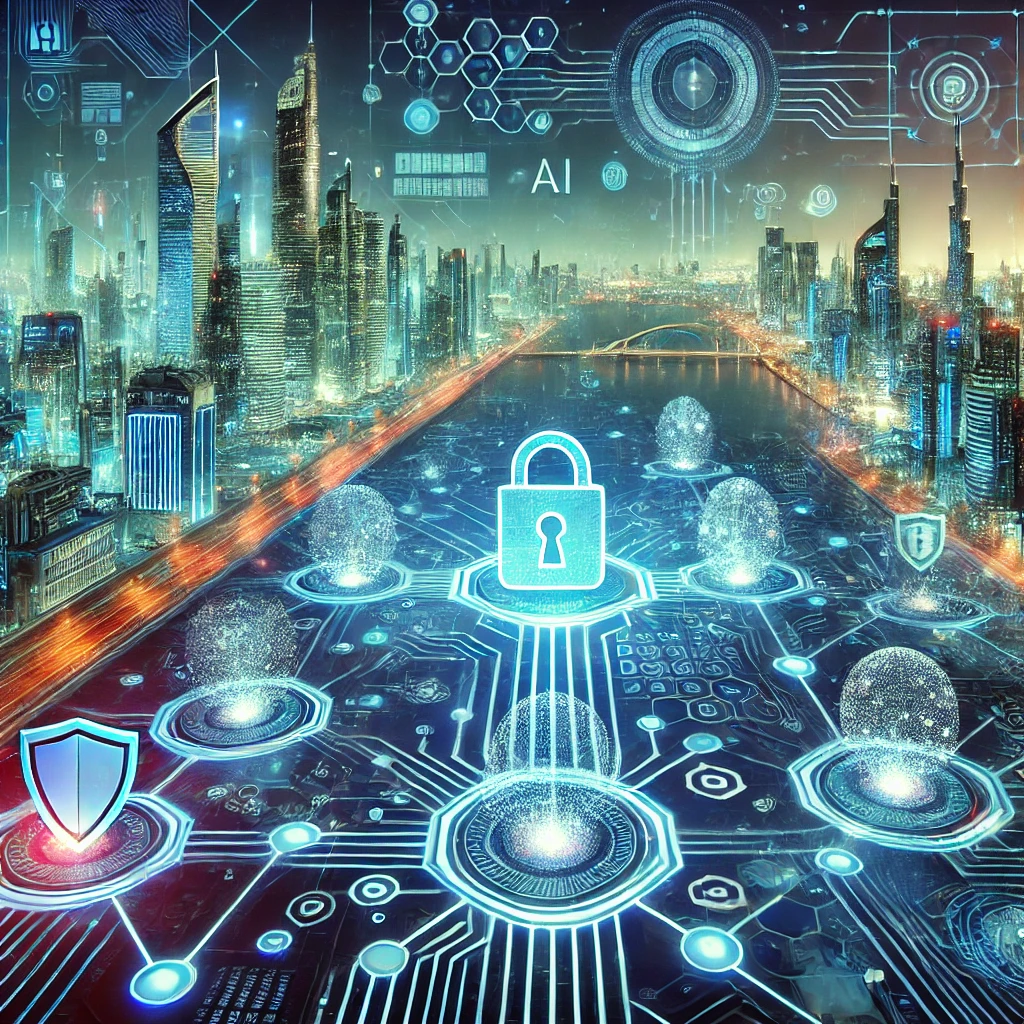In the digital age, cybersecurity has transformed from a niche concern to a critical necessity, especially in the UAE, where advancements in technology have propelled Abu Dhabi into a global digital hub. As the region’s technological landscape grows, so do the risks, and companies like Cyber Core Technology are at the forefront, ensuring the safety of our data, infrastructure, and digital systems.
In this blog, we will explore the evolution of cybersecurity, tracing its roots, understanding how threats have evolved, and looking forward to the future of cyber defense.
Early Days: The Birth of Cybersecurity
Cybersecurity’s origin can be traced back to the early days of computers, when the first cyber-attacks were largely experimental. The primary aim was to exploit systems to understand their vulnerabilities, with no intention of causing harm. However, the rise of interconnected networks led to new challenges, as early viruses like the “Creeper” virus (1971) surfaced to highlight the need for protective measures.
The 1980s and 1990s marked the true beginning of cybersecurity as an industry. During this time, businesses started adopting computer systems for operations, and the internet began to take shape. With the introduction of worms, Trojan horses, and viruses, organizations realized they needed to secure their digital environments. One of the most notable early incidents was the Morris Worm in 1988, which caused widespread disruption and highlighted the importance of cybersecurity measures.
Rise of the Firewall
One of the first major defensive mechanisms introduced during the late 1980s and early 1990s was the firewall. As networks became more sophisticated, organizations needed to create barriers to prevent unauthorized access. Firewalls acted as digital gatekeepers, regulating traffic and protecting internal networks from external threats.
The introduction of firewalls and anti-virus software marked the early framework of cybersecurity solutions. While rudimentary compared to today’s standards, they were revolutionary for the time, helping businesses build confidence in using digital systems for sensitive operations.
The New Millennium: The Rise of Sophisticated Threats
As we entered the 21st century, the cyber threat landscape began to evolve rapidly. The expansion of the internet led to more sophisticated and targeted attacks. Hackers were no longer experimenting; they had become organized, motivated by financial gain, espionage, and even political agendas.
1. Targeted Attacks and Ransomware
In the 2000s, phishing and ransomware emerged as significant threats. Phishing attacks tricked individuals into giving up sensitive information, often through emails that appeared legitimate. Meanwhile, ransomware encrypted victims’ data and demanded payment to restore access. These attacks highlighted how cybercriminals had shifted from targeting systems to exploiting human vulnerabilities.
In 2017, the WannaCry ransomware attack affected more than 200,000 computers across 150 countries, including critical infrastructure like hospitals. This incident underscored the importance of having not just preventative tools, but also response strategies for when attacks happen.
2. The Growth of Cyber Espionage and State-Sponsored Attacks
As the internet matured, another concerning trend emerged: state-sponsored cyber attacks. Governments began using cyber tools to spy on other nations, disrupt operations, or steal sensitive information. These attacks, often highly sophisticated, could target government agencies, critical infrastructure, and even private companies.
One of the most infamous state-sponsored cyberattacks was Stuxnet in 2010. This worm, designed to target Iran’s nuclear facilities, demonstrated the devastating potential of cyber weapons and sparked a global conversation on the ethics of cyber warfare.
3. Cloud Computing and the Expansion of the Attack Surface
The widespread adoption of cloud computing has revolutionized the way businesses operate, providing scalable solutions for data storage and processing. However, it has also expanded the cyber attack surface. With data stored off-site, cybercriminals saw new opportunities to exploit vulnerabilities in cloud infrastructure.
The challenge was twofold: businesses needed to secure their cloud environments while ensuring their employees adhered to best practices. Misconfigurations in cloud systems became one of the leading causes of data breaches, requiring a fresh approach to cybersecurity.

The Current Landscape: An Arms Race Between Attackers and Defenders
Today, cybersecurity is more dynamic and fast-paced than ever before. Cyber attackers continuously evolve their tactics, leveraging emerging technologies like artificial intelligence (AI) and machine learning (ML) to craft more sophisticated attacks. Meanwhile, defenders are using the same technologies to enhance detection, response, and prevention.
1. AI and Automation in Cybersecurity
The increasing complexity of cyber attacks has led to the rise of AI-powered cybersecurity solutions. Traditional security methods, reliant on human intervention, can no longer keep up with the speed and scale of modern threats. AI and automation allow businesses to identify and neutralize threats in real-time, vastly improving response times and minimizing damage.
For instance, AI algorithms can detect anomalous behavior within a network, flagging potential intrusions before they escalate. Similarly, machine learning models can predict vulnerabilities based on historical data, helping organizations stay one step ahead of cybercriminals.
2. Zero Trust Architecture
As the workplace becomes increasingly digital and remote, traditional security models—centered around securing a single perimeter—are becoming obsolete. Enter Zero Trust Architecture, a framework that assumes no entity, internal or external, is trustworthy by default. Every user, device, and application must be continuously authenticated and authorized, no matter where they are located.
Zero Trust is quickly becoming the gold standard for cybersecurity in an era where distributed workforces and cloud-based infrastructure dominate. It emphasizes the need for continuous monitoring, limiting access to sensitive data, and segmenting networks to minimize the damage of potential breaches.
The Future of Cybersecurity: New Frontiers and Challenges
Looking ahead, the future of cybersecurity will be shaped by several emerging trends and challenges:
1. The Rise of Quantum Computing
Quantum computing, while still in its infancy, promises unprecedented computational power. While this offers tremendous potential benefits for industries like healthcare and finance, it also poses a significant threat to cybersecurity. Current encryption methods, such as RSA, could be rendered obsolete by quantum computers capable of solving complex mathematical problems in seconds.
To prepare for this, researchers are already working on quantum-resistant cryptography—a new form of encryption that can withstand the power of quantum computing.
2. Cybersecurity for the Internet of Things (IoT)
The Internet of Things (IoT) has revolutionized the way we live, with smart devices becoming an integral part of our daily routines. However, every connected device represents a potential vulnerability. As IoT devices proliferate, securing them will be a top priority.
The challenge lies in ensuring that every device, from home assistants to industrial sensors, is properly secured. Without robust defenses, attackers could exploit these devices to launch large-scale attacks, as seen in the Mirai botnet attack of 2016.
Cyber Core Technology: Protecting Abu Dhabi’s Digital Frontier
As a leading cybersecurity company based in Abu Dhabi, Cyber Core Technology is committed to safeguarding businesses, government agencies, and individuals from the ever-evolving cyber threats. Our team of experts leverages the latest technologies, including AI, machine learning, and Zero Trust architectures, to provide comprehensive cybersecurity solutions tailored to the unique challenges of the UAE market.
In a region where digital transformation is a priority, Cyber Core Technology understands the critical need for proactive and resilient cybersecurity strategies. From defending against ransomware to protecting sensitive government data, we are dedicated to securing Abu Dhabi’s digital infrastructure and ensuring a safer, more secure future.
Conclusion: The Never-Ending Battle
The evolution of cybersecurity reflects the ongoing arms race between defenders and attackers. As technology advances, so do the threats, but the cybersecurity industry continues to innovate and adapt to protect against the digital dangers of today and tomorrow. For organizations in Abu Dhabi and beyond, the importance of a strong cybersecurity foundation cannot be overstated.
At Cyber Core Technology, we stand ready to face these challenges head-on, ensuring that your business remains secure in an increasingly interconnected world.







